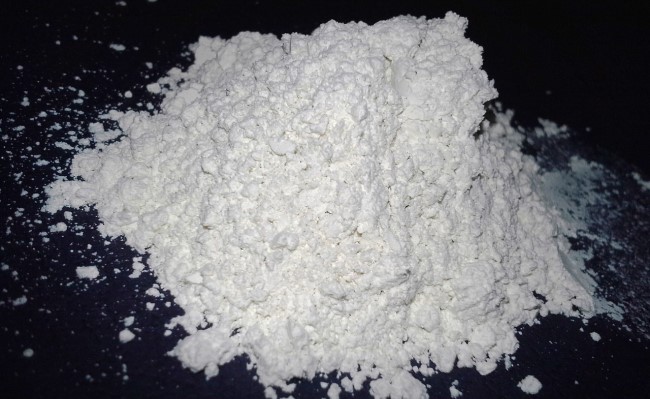
If you can pronounce Diatomaceous earth, kudos. If you can SPELL Diatomaceous earth, double kudos. But even if you mispronounce it like I do, (Dianysis, Diagnosis, Dionysus) that doesn’t mean you can’t use it as an effective tool on your farm or homestead.
So, what is Diatomaceous earth? It looks like something Tony Montana would snort off his desk in Scarface, but it is actually mineral made from fossilized algae (those ancient algae are called “diatoms,” and that’s where the name comes from), and contains 80-90 percent silica. Due to its softness, it can be crumbled into a fine white powder. Depending on the granularity, this powder can have an abrasive feel, similar to pumice powder, and has a low density as a result of its high porosity.
Here are several uses for Diatomaceous earth (DE).
Worm Prevention: Many of the dewormers sold over the counter are toxic to humans and other animals if used improperly. DE is an organic alternative that can be added to food daily to prevent worms and other internal parasites. The trick is, don’t add too much DE to the food so that the animal doesn’t want to eat it. Lightly dust the food as if it is an accent of powdered sugar to a meal. This can be used for equine, chickens, pigs, goats and sheep, among others. Note that it will not remove worms from an animal that is sick with worms, but it can be used as prevention and remove mild cases of worms in some instances.
Feed Preservation: Moisture will ruin a bag of cracked corn or chicken feed in a matter of hours. One way to help prevent this is to add DE to the feed. Not only does it add the worm-prevention, but it will absorb extra moisture and help keep feed from getting moldy.
Larvae and Pest Control: It may be an old wives’ tale, but old farmers say that spreading DE in the bedding of livestock will help kill any parasites, worms and other nuisances. They say the parasites get “cut up” by crawling over the abrasive DE and therefore die. While I can’t confirm this scientifically, I’ve noticed a definite decrease in pests when I spread it in the bedding. Additionally, it can be used as a pest control dust on vegetables in your garden!
Chicken or Animal Dust: I spread a full bag of DE in the donkey pen once a month. They love to roll in it to remove pests and keep the flies away. So do the chickens. It’s a perfect dust bath and protects them from flies and other pests.
When you purchase DE, get a large bag from a feed or farm store. They come in 40-50lb bags for less than $15 in most cases. If you purchase from a boutique or pet store, you can pay upwards of $20-40 for a 5lb bag. Good luck, and feel free to add more uses for DE to the comments section!
Ben North lives and writes from a homestead in Iowa.

Wes D. says
D.E. is effective against insects in that as an insect contacts it, the become coated with it. The insect then cleans itself. The DE. is ingested, but more importantly it is taken in through the spiracles. Spiracles are through which insects breath. The D.E. then clogs and “cuts” the insect as the edges are very sharp.
CaptTurbo says
The article fails to mention that there are different kinds of DE. The kind that is used for pool filters which you don’t want and food grade DE that you do want.